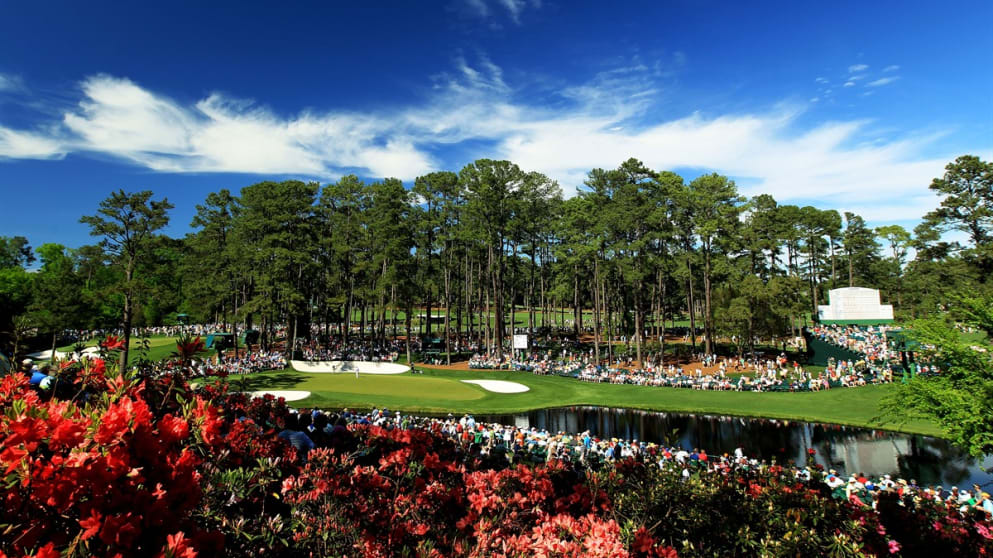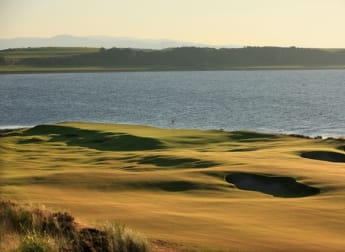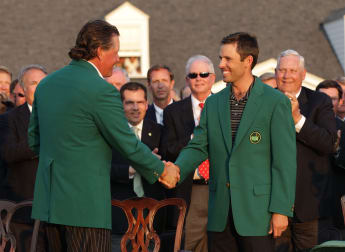As we continue the build-up to the Masters Tournament, europeantour.com looks into the rich history and unique allure of its inimitable and immovable host venue...
The Augusta National Golf Club is a part of the world irrevocably associated with the senses, specifically sight, and more explicitly, colour. This is particularly fitting considering the history and heritage sewn into the Georgian land on which the club was built.

Two hundred years ago, long before Bobby Jones and Clifford Roberts bought the land for $70,000 in 1931, the site was an indigo plantation. Colour, quite literally, runs through Augusta’s veins.
And the evolution towards the vibrant Augusta we now know as the home of the Masters Tournament doesn’t end there. In 1857 a Belgian Baron named Louis Mathieu Eduoard Berckmans, a horticulturalist by hobby, and his son, Prosper Julius Alphonse, an agronomist by profession, bought the old plantation and established ‘Fruitland Nurseries’, importing exotic foreign plants and flowers with which to endow their business.
Following Prosper’s death in 1910 the nursery ceased operations by the time its charter expired in 1918, but the great variety of flowering plants and trees, including a long row of magnolias – planted before the Civil War – remained on the property.
Bobby Jones, who retired from championship golf in 1930 after a glittering career as an amateur, had always retained ambitions of building a golf course and when Thomas Barrett Junior, a mutual friend of both Jones and Roberts, recommended the Augusta site the pair were instantaneously impressed.
“I shall never forget my first visit to the property,” Jones later wrote in Golf Is My Game. “The long lane of magnolias through which we approached was beautiful. The old manor house with its cupola and walls of masonry two feet thick was charming. The rare trees and shrubs of the old nursery were enchanting.
“But when I walked out on the grass terrace under the big trees behind the house and looked down over the property, the experience was unforgettable. It seemed that this land had been lying here for years just waiting for someone to lay a golf course upon it.”
Famed British golf architect Alister MacKenzie was commissioned to design the layout, highly regarded for his sensitive treatment of natural features, a characteristic the land had in profusion, and the course was opened in December 1932.
The evidence of the Berckmans’ purchases is still abundant throughout the famous course today, most notably in the grand variety of azaleas and dogwoods, rhododendrons and pines that line Augusta’s renowned grounds. The land’s history imbues the very names of the holes themselves, each giving reference to the predominant shrub or tree that adorns it, from Tea Olive to Golden Bell to Holly.
The 365-acre site has over 80,000 plants, from more than 350 varieties, but the wealth of effervescent tones at Augusta is prevalent throughout the course in many other forms. The grass is almost unnaturally green; the bunkers are furnished with sand a burning, pure white, matched only in clarity by the pristine clubhouse and cabins; and those prominent yellow flags.
Course features that have over the years been bestowed with evocative titles seem to bequeath further prestige into Augusta National’s aura, from the testing triumvirate of Amen Corner, to the three bridges named after a trio of late, great Masters Champions in Ben Hogan, Byron Nelson and Gene Sarazen, to Ike’s Pond.
Rae’s Creek, a stretch of water that has imbibed many a wayward ball during Augusta’s rich 80-year history, flows at the back of the 11th green and runs in front of the 12th green and 13th tee and was named after John Rae, who died in 1739. Rae’s house was the farthest fortress up the Savannah River from Fort Augusta, a safe house that was used during Indian attacks when the fort was out of reach.
Widely known as a playground for numerous American Presidents, Augusta’s 17th hole has a particularly presidential feature in the Eisenhower Tree. Lying approximately 210 yards from the Masters tee on the left side of the fairway and standing at around 65 feet high, the century-plus year old Loblolly Pine was a notoriously thorny opponent for former US President General Dwight D. Eisenhower, who hit the tree so many times he allegedly once proposed cutting it down at a governor’s meeting in 1956.
The place is undoubtedly special. Special for the fans, special for the media, and most of all, special to the players.
Perhaps it is because the Masters is the first Major Championship on the golfing calendar, or perhaps because it is always held in the first full week of April, at the dawn of spring with a long summer stretching out before it.
But the most likely explanation is because this much sought-after tournament is always held at the same location. Year after year, Augusta National plays host to a pantheon of golfing greats and the memories they often create there are as kaleidoscopic as the colours that play witness.
This year’s tournament, the 76th staging, promises to be no less of an occasion. After travelling down the centuries-old 61-tree vista of Magnolia Lane, “unique” seems to be the recurring word used by players to describe both the Masters and Augusta; a unique place and a unique course that usually requires four superb rounds to claim a coveted Green Jacket.
Returning champions – already members of an elite guild – frequently pay testament to Augusta in the build-up to the competition each year. Ian Woosnam, Masters Champion in 1991, last year eloquently referred to stepping off the first tee as feeling like “walking in to paradise”, while two-times Masters Champion Byron Nelson said in 1937 that “As for the beauty, the course stands far superior to anything I have ever played”.
And so, 81 years after Jones and Roberts bought the nursery that would become one of the greatest golf courses in the world, new memories and new heroes wait in the Augustan wings for the beginning of this year’s Masters story.
On this most vivid and stimulating of sets, ablaze in the luminous light of thousands of Berckmans’ dogwoods, perhaps the script is written for another European Tour star to blossom into a Major Champion.
With it they would write their name indelibly onto the pages of sporting history, stain it on the paper in Georgian indigo.





